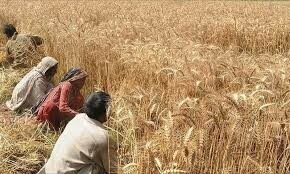Citizens, both young and old, gathered a few days ago for a cause: planting trees. The Lahore Conservation Society, with the help of volunteers from all over the city, planted 360 saplings on Jhulke and Ledher campuses of The Citizen’s Foundation schools. The event, which was open for the public, saw 45 volunteers brave the blistering heat to take a step towards protecting their city’s environment.
Students from many institutions assisted the gardeners in planting saplings of Kikar, Sheesham, Sumbul, Sukh Chain, Jaman, Tali and Kachnar. This activity was a part of the 29-year-old organisation’s ‘Tree Plantation Drive’ which is aimed at countering the effects of rapid uprooting of trees for recent infrastructure projects in Lahore.
Mr Ali Amjad, who is heading this project, says their plans go beyond merely planting trees. “A major purpose of our drive,” he says, “is to create awareness among the volunteers regarding the importance of trees and how to care for them. Our aim isn’t just to plant 3,000 trees during this month and to leave it at that. We want our volunteers to take the initiative forward by realising how direly Lahore needs more trees and planting saplings in their own immediate surroundings.”
The towering flyovers, greenbelts with tall palm trees, wide open landscapes of new housing societies and smooth flowing underpasses of urbanisation that we all, especially our politicians, fancy come at the grave cost of our city’s natural vegetation. It is widely believed that a country needs at least 25pc of its land to have forest cover in order to sustain its population, however, a 2011 World Bank study proved only 2.13pc of Pakistan’s land is covered by vegetation, a number that has only declined since then.
While historically, Lahore has been able to retain its lush green parks and tree-filled suburban areas, tree cover in the city is now rapidly declining. This is greatly concerning seeing as how Lahore is already estimated to have air pollution levels higher than World Health Organization standards.
Trees are crucial to produce oxygen: the most fundamental necessity of human life to survive. Most environmentalists estimate that one mature tree can provide enough oxygen for two people. These organisms purify our air of carbon dioxide, a greenhouse gas that when in abundance causes the phenomenon known as global warming that is causing temperatures on earth to rise. Some environmentalists have come to recognise trees as nature’s air conditioners as they absorb a large part of sunlight’s energy. Trees are also considered to intercept airborne particulates and reduce smog to improve the air quality of an ecosystem.
Yet our local authorities do not seem to value their benefits and are continuously chopping down trees for transport infrastructure projects that they claim are more important than the quality of air that we breathe in. Over the past few years, thousands of trees have become victim to the government’s ambitious road construction and expansion projects. Some of these projects have been in violation of the state’s orders such as the Supreme Court verdict of Sept 15, 2011, which declared the Bambawali-Ravi-Bedian Canal and the green belt on both sides of the Canal Road to be a cultural heritage park, and the Lahore Canal Heritage Park Act 2013.
On July 9, the Supreme Court ruled in favour of the Lahore Development Authority to allow it to continue construction on its Signal-Free Corridor on Jail Road despite opposition from the Lahore Bachao Tehreek which estimates that this project will claim yet another 600 trees. While the government promises to plant multiple trees in lieu of each tree that is cut in these projects, the fact remains that most of these promised trees are either not planted, die as saplings due to improper or insufficient care or take 10 to 20 years to become mature.
As Lahore increasingly becomes a concrete and steel island, nature has provided us with a lesson of the drastic effects of climate change that can occur due to the Urban Heat Island effect in the form of the recent heatwave in Karachi that claimed about 1,300 lives. The Urban Heat Island effect is a modern environmental phenomenon by which urban cities, which constantly replace vegetation with concrete, asphalt and steel, experience temperature rises as these materials more effectively absorb short wave heat radiation from the sun and slowly release it as long wave radiation that takes longer to escape the atmosphere -- a process further promoted by high carbon dioxide levels in areas with fewer trees -- and causes the atmosphere to heat up.
Published in Dawn, August 1st, 2015
On a mobile phone? Get the Dawn Mobile App: Apple Store | Google Play















































Dear visitor, the comments section is undergoing an overhaul and will return soon.